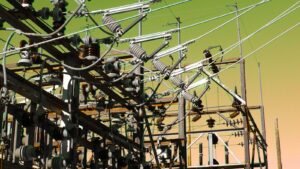In order to meet fuel emissions standards enacted by governments and emissions reductions targets put in place by the corporations themselves, automotive OEMs are investing billions of dollars in battery electric vehicles (BEVs) and plug-in hybrid vehicles (PHEVs). In fact, some auto OEMs are planning on
electrifying their entire fleet by the early to mid-2020s. However, BEVs and PHEVs are not the only low-emissions vehicles that will be part of the transition to decarbonized transportation. Hydrogen fuel cell vehicles (FCVs) are a new type of low-emission vehicle to rival internal combustion engine (ICEs) and electric vehicles. The
hydrogen FCV market was valued at $278 million in 2016, but is projected to reach over $12 billion by 2023. Although this pales in comparison to the
electric vehicle market ($119 billion in 2017 and $567 billion in 2025), the massive 72.4% CAGR of FCVs, compared to a 22.3% CAGR for electric vehicles, could quickly put FCVs on the map.
Why FCVs?
In an FCV, pressurized hydrogen is stored as fuel in the tank and interacts with oxygen in fuel cells to generate electricity through a chemical reaction. This process is up to three times more efficient than ICEs, and the only byproduct is water, making the chemical reaction emissions-free. Hydrogen’s strong energy storage potential, low emissions profile and abundance as a resource make it an attractive fuel alternative to fossil fuels.
FCVs also have a few advantages over BEVs and PHEVs – mainly, range and refueling time. The refueling process for hydrogen fuel cell vehicles is identical to ICE vehicles – the driver pulls up to a fuel station and pumps hydrogen into their vehicle in the same way as they would with gasoline, filling the tank in three to five minutes. In addition, FCVs can have a 300 – 400-mile range for passenger vehicles, far beyond even the longest range for electric vehicles. Hydrogen fuel cells’ long range is particularly advantageous over BEVs in heavy-duty, commercial vehicles such as trucks, buses and ships.
The sector has seen plenty of activity recently:
- Hyundai and Cummins partnered to develop hydrogen fuel cell technology for heavy duty vehicles.
- Nikola Motor Company received $250 million in funding.
- ITM Power raised $47 million in funding and announced a collaboration with Shell to develop hydrogen refueling infrastructure.
- DHL and StreetScooter conducted a trial for hydrogen-powered delivery vans.
- Toyota partnered with Eni to develop FCVs.
Challenges
For hydrogen fuel cell vehicles to be truly zero-emission vehicles, the hydrogen itself must be produced through electrolysis powered by renewable energy. Hydrogen is an abundant resource and is most easily produced through separation from other elements, such as oxygen in a water molecule. One process involves extracting hydrogen from water molecules through electrolysis, storing that hydrogen, then converting that hydrogen back to electricity in a fuel cell. Electrolysis is an energy-intensive process, and only emissions-free if powered by renewable energy.
This production of so-called “Green Hydrogen” is costly, around three times more expensive than “Grey Hydrogen”, or hydrogen produced from natural gas. Although some estimate that increasing electrolysis capacity could reduce the cost of green hydrogen by 70% over the next 10 years, production capacity remains limited.
Business Models
Incumbent auto OEMs active in the hydrogen space are adding FCVs to their lineup, such as the newly updated Toyota Mirai. Fueling infrastructure gaps, however, remain a barrier to adoption and auto OEMs are looking to close this gap through partnerships, such as Toyota’s partnerships with Eni and the Japanese government and Hyundai’s partnership with Saudi Aramco.
Newcomers are developing innovative business models to solve some of the main challenges with FCV adoption, such as infrastructure gaps and maintenance requirements. Nikola Motor has specialized in class 6-8 heavy duty trucks (offering both pure electric and hydrogen models) and electric off-road vehicles. In addition to vehicle development, Nikola plans to operate a hydrogen fueling and vehicle service network and bundle truck, fuel and maintenance expenses into a single long-term lease. The company plans to build a network of 700 truck stop-size hydrogen fuel stations in the U.S. and Canada by 2028 to provide ample, inexpensive hydrogen for carriers. However, this would require a steep adoption curve, as California, one of the most supportive markets for hydrogen, just opened its 40
th hydrogen refueling station.
Competition
While automotive incumbents, particularly Honda, Hyundai and Toyota, are developing their own FCVs, newcomers are raising significant capital to specialize in hydrogen vehicles, including Grove Hydrogen Automotive and Nikola Motor Company. FCV developers will need to keep costs low to remain competitive with ICE and electric vehicles, and this can be done in a few ways – downsizing the fuel cell stack to reduce the cost of the vehicle itself, ramp up production of fuel cells and ancillary components to achieve fuel cell cost reductions through scale and building out a robust refueling infrastructure for various applications to reduce hydrogen and storage costs.
Auto OEMs have an advantage over newcomers through the ability to scale production and finance the supply chain. For example, FCV startup Grove Automotive is developing innovative passenger vehicles that feature lightweight materials to improve vehicle efficiency and clean production methods, but Toyota, Hyundai and Honda have already sold over 6,500 FCVs in California alone. Toyota, the leading FCV producer, plans to increase annual production to 30,000 by 2020 and Hyundai plans to increase annual production to 40,000 by 2022. This level of scale could help drive down costs and accelerate deployment of FCVs and refueling infrastructure.
Keep an eye on…
Despite plans to deploy 1 million FCVs by 2030, the Ministry of Finance in China recently announced an end to FCV subsidies by the close of 2020. It is still unclear how this will impact production in China and elsewhere. Meanwhile,
European markets are taking a different approach and reducing the cost of green hydrogen production through grants and California is focusing on the deployment of fueling infrastructure to enable widespread adoption of FCVs.


